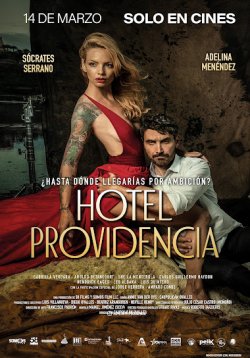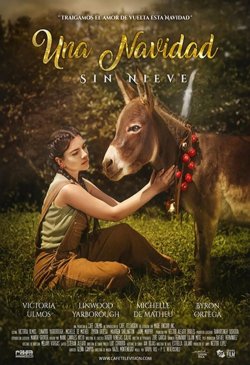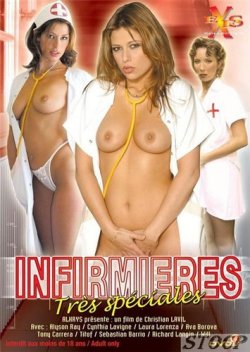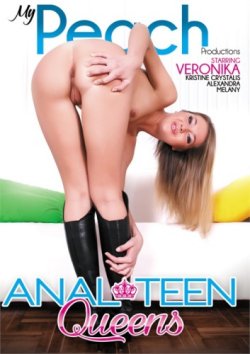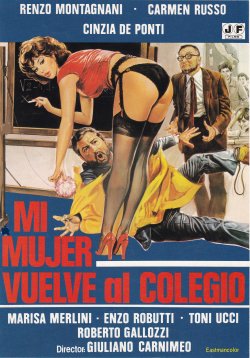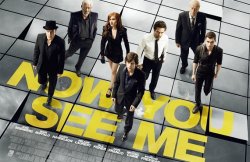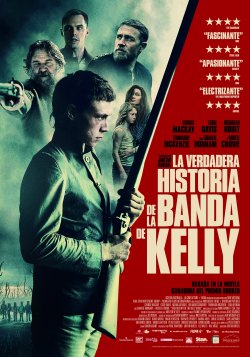 |
|
SINOPSIS
Narra la historia de Ned Kelly y su pandilla mientras huyen de las autoridades durante la década de 1870...
INTÉRPRETES
GEORGE MacKAY, CHARLIE HUNMAN, RUSSELL CROWE, ESSIE DAVIS, NICHOLAS HOULT, ORLANDO SCHWEDT, THOMASIN McKENZIE, SEAN KEENAN, EARL CAVE, MARLON WILLIAMS, LOUIS HEWION, JESSICA BORG, JOSEPHINE BLAZIER, SARAH BEDAK, JAMES AO
MÁS INFORMACIÓN DE INTERÉS
![]() CÓMO SE HIZO
CÓMO SE HIZO
![]() VIDEO ENTREVISTAS
VIDEO ENTREVISTAS
![]() AUDIOS
AUDIOS
![]() PREMIERE
PREMIERE
 INFORMACIÓN EXCLUSIVA
INFORMACIÓN EXCLUSIVA
GENESIS OF TRUE HISTORY OF THE KELLY GANG...
In 2011 HAL VOGEL, Producer at Daybreak Pictures was in a meeting with author PETER CAREY’S agent. VOGEL, an admirer of CAREY’S work noted the TRUE HISTORY OF THE KELLY GANG sitting on the agent’s desk. Having been previously optioned, the rights had reverted back to CAREY.
Describing the book as ‘extraordinary’ work, VOGEL set about seeking finance. He had a few knockbacks but then came a screening of JUSTIN KURZEL’S film Snowtown, at the London Film Festival in 2012 and that all changed.
“I was blown away by the filmmaking.” VOGEL says of Snowtown. “It’s an incredible piece of cinema. But there’s also a lot of resonances in the themes in Snowtown with Peter’s book and a sensibility that I thought would really be interesting in terms of discussing TRUE HISTORY OF THE KELLY GANG with Justin.”
KURZEL already admired the book and he and VOGEL met the next day for breakfast. KURZEL was initially reticent, needing a reason to make a ‘Ned Kelly’ film before he could commit to it. It was the unique point of view in Carey’s writing, plus the timing of the project and the distance KURZEL felt to Australia at the time that gave him the answer.
“I was really intrigued and interested in coming back to a particular voice that I was experimenting with in my first film (Snowtown) and I was just homesick.” says KURZEL “I’d been in London for 5 years and I was desperate to reconnect to the landscape in Australia and the culture and there was something about reading this book again after 6 years after Hal had given it to me, that made me desperately want to make it.”
VOGEL points to KURZEL’s involvement as the catalystto getting the film made.
“It was really Justin coming onboard that made the real difference and shifted how people perceive what one might do with that story,” VOGEL says. “The idea of TRUE HISTORY OF THE KELLY GANG in the hands of a director like Justin suddenly becomes a very different and very clear proposition.
“He’s got a very strong vision, a certain sensibility, which was really, really exciting. It’s the only way that you can do a book like that. It’s brutal. It’s visceral. There’s kind of a darkness in the violence to it but there’s also a very strong emotional through-line that’s really clear in the book, between that journey from boy to man.”
Producer LIZ WATTS and Porchlight Films were approached by Daybreak in mid 2012 to come on board as Producers.
WATTS recounts- “Vincent Sheehan and I met Hal one unseasonably rainy day in Cannes, and I then met with Hal’s producing partner David Aukin later that same year at the Toronto Film Festival. Tessa Ross and Rose Garnett (both then) of Film4 actually introduced us as they had come on board to develop the project. Daybreak were looking for an Australian partner, and of course, we greatly loved the Peter Carey novel – I’ve always thought his novel was the quintessential take on the overgrown myth that Ned Kelly is to this country and Peter makes history personal in such a beautiful way in the telling. That Hal had signed Justin on to direct was of course truly exciting as well, as I am a huge fan of Justin’s previous work and I knew Justin would bring a huge singularity and vision to the telling of this story.”
While KURZEL went on to direct Macbeth (with Film4) and Assassin’s Creed, WATTS and VOGEL approached writer SHAUN GRANT, who had penned the screenplay for Snowtown to adapt TRUE HISTORY OF THE KELLY GANG.
“I felt a surge of fear go through my body, but I tend to do what terrifies me, so I said yes” GRANT says, though noting that he didn’t say yes straight away. Like KURZEL, he wanted to make sure this particular iteration of the Kelly story was something he was completely committed to and felt it should be made. GRANT was a fan of Peter Carey’s work, though hadn’t read this book. Within the first read, he was certain.
“ I think what excited me the most was, in essence, in the title, the True History, the nature of the title, and the fact that Peter took liberties in his storytelling where he didn’t stick to the historical truth all the time,” says GRANT. “I got excited by that because I felt, and Justin agreed, that we could go even further, and I didn’t have to do a documentary type portrayal. Snowtown was similar in that way, you don’t really know what’s said between those walls, between those men, so you have to invent.”
Speaking of he and KURZEL’s collaboration, GRANT notes their similar tastes, honesty and clarity on what they each like. It was what GRANT envisioned KURZEL would do with the story that convinced him.
“I knew Justin wasn’t going to do what’s been done before, which was definitely my fear. I always ask myself, why now? Why does this story have to be told?” says GRANT “I just knew push the envelope and say, let’s not do a polite version of Ned Kelly.”
The filmmakers readily credit the timelessness in Peter Carey’s novel as being the attraction to the story but also the springboard for not just the visual and character references, but the wider themes that can be explored in TRUE HISTORY OF THE KELLY GANG.
It was in this timelessness, on his first reading of the book, that writer GRANT saw the parallels to our world today. “When I first read the book I clearly remember Liz sent me a copy and I read it and I wrote one word on the inside cover, and I wrote the word ‘Terrorist’.”
“Ned’s been very much portrayed (in the past) as a hero, and I’m always interested in characters on the wrong side of the law in terms of how they got there and why. And as I was writing these past few years, there’s been a lot in the media about terrorism and people being persecuted because of their culture and their background; where they’re from. And when you put up with that persecution long enough, you decide that that’s enough and you decide to burn the world.”
Expanding on that GRANT says, “I wanted to just show Kelly as he was in this story, both the good and the bad, and let others decide. Some people will still call him a hero, and some people will still call him a cop killer, and that’s not for me to say. Hopefully, you can make your own decisions.”
On the flip side of the relevance to the current world, KURZEL points to the danger of viewing characters with today’s societal worldview: “I think I was really keen to see that bad characters and good characters are sharing the same bed in those times. What was happening then and the difference between cops and robbers was very thin.
“There was genocide happening in Australia and crimes of enormous proportions committed by authority so the line of what is good and what is right is obviously a very different conversation to what it is to now.”
The irony of the title, TRUE HISTORY OF THE KELLY GANG was not lost on the filmmakers and indeed a reason to make the film in the first place. It is even reflected in some of the ideas the film presents, KURZEL saying: “A huge part of this film is about what is true and what is not and your history and your story and what you have done in your life can be easily stolen from you and recreated.”
“In the film Harry Power says to little Ned “always make sure you’re the author of your own story because the English will always take it and fuck it up” and I think that sort ingrains in little Ned that words matter and writing matters and documentation matters.”
Screen Australia and Film Victoria boarded the project, joining Film4 to continue the development of the screenplay and support early prep work and location scouting in Victoria, Australia. Locations secured included Melbourne Gaol, the State Library, Wangarratta, Dandengong Ranges, Marysville, Glenrowan and a beautiful old homestead called Mintaro. While this is the heart of traditional Kelly country, just as in Carey’s story, KURZEL and the filmmakers sought to harness landscapes that serviced the essence of the TRUE HISTORY OF THE KELLY GANG.
An incredible piece of landscape called the Winton Wetlands was utilised for what KURZEL describes as the ‘playground for Kelly Selection.’ Culturally it held huge importance for Indigenous communities, and elders took the production around, explaining that it was a meeting site where hundreds of Aboriginal peoples have met and that in Kelly’s time it would have been a supermarket, providing shelter, food and water. It has a varied history environmentally, having been damned, then dried up and subsequently all the trees started dying, although it is now also an amazing habitat for flora and fauna. While currently under restoration, it presented a gothic and scarred backdrop for the Kellys’ home. Producer WATTS: “When we first saw this landscape in very early scouting, we were pretty blown away, and we knew it would provide a backdrop landscape for the story that would set this film truly apart from previous Kelly movies.”
This is where we first see a recurring visual motif, taken from the iconic Ned Kelly helmet, of the gap where two eyes peer out from a black box. Modelled on the iron hulled USS Monitor ship, the armour that Ned Kelly eventually wears at Glenrowan was utilised by KURZEL and the production design team in the Kelly home.
“I was fascinated with the monitor and iron and metal and I guess that aperture that Ned Kelly eventually kind of becomes,” says Kurzel. “The whole idea of the film coming down to two eyes looking out was something we thought would be amazing as a premonition throughout the whole film, if there were little framings and little ideas that made you feel that aperture.
“For the Kelly house, I was really inspired by wool-sheds, I didn’t want it to be stone – I wanted it to feel like it was floating in the landscape like a boat, like the USS Monitor and that every sort of item and idea in the film was leading us towards those final images. We played a lot with the slits – I wanted you to be able to see the outside through a slit and the inside through the slit.”
The landscapes the characters go through are incredibly varied in the film. On shooting at Marysville, KURZEL notes the rarity of snow in Australian cinema in general, : “There was something about going up and seeing Marysville, and the Gang would’ve ridden through there - the landscape is extraordinary now after the fires, and there is a tragedy about that place and a beauty about it, that seemed to encapsulate this kind of story.”
Encapsulating the poetry of the story also flowed through to those final images at Glenrowan, KURZEL saying “I didn’t want it to be a kind of wooden-inn, I wanted Glenrowan to represent the football club rooms my Dad would take me to as a kid. Everyone would write their names on the walls and I loved that idea, especially because it’s Ned writing his own history and of past travellers marking their names and statements. It was about not being so caught up in what was true at the time but what felt psychologically right for the characters and the story.”
Servicing this story meant not being bound by rules of time and place, which was a through line for all the visuals in the film. KURZEL pointed out that Peter Carey had created a timeless world in the novel, noting that the cultural vibe of the characters makes them feel very present day and this subsequently shone through in the costuming.
“What I think is really important is silhouette and the silhouette that I saw in Australia in the 70’s and 80’s, especially on men, was really similar to the silhouette in the 1870’s,” said KURZEL. “It was taking my favourite period in Australian music, and art, and fashion and combining it with the 1870’s and seeing where that sweet spot hit.”
“The aim was to create a timeless feel and look at each character in a really specific way - I was fascinated by colour, I was fascinated by the attitude of the costume - there being a sexuality about it. For example I was determined that Ellen Kelly be in pants and boots as opposed to big frocks and corsets, referencing Patti Smith.”
THE CAST...
The book and subsequent script called for a significant ensemble cast, spanning two periods of Ned Kelly’s life. After an extensive search, GEORGE MACKAY was cast as the older Ned Kelly. He grew up in London, England but his father was from Adelaide, Australia and had Irish heritage . The opportunity to connect with these roots via Ned, along with the fact Snowtown had made a profound effect on him, led MACKAY in his own to words to “want it more than anything.”
“There was instantly a feeling about George about wanting to be good,” says KURZEL of the first audition with MACKAY. “Wanting to be a better man and wanting to potentially be great. Also in the book you could feel and understand that Ned Kelly was a writer, he wasn’t just some kind of ruffian and that there was something incredibly sophisticated about him. He had enormous potential, and there is a creative side to him that could have easily seen him as our Prime Minister as opposed to our most famous bushranger. It was also important to be able to transform that innocence to the eventual violent, brutal and unforgiving man.”
In preparation, KURZEL sent MACKAY music, films and imagery to immerse himself in and talked about character references like Conor McGregor and the Sharpies, an Australian youth gang from the 1960s and 70s, though was careful to not base Ned in his entirety on one reference. MACKAY explains, “Justin’s huge document of things to watch also had the caveat of no, it’s not going to be Mad Max. It’s not going to be Walkabout. It’s not going to be Connor McGregor. It’s just going to be like the tiniest flicks of colours, and then you just make what you want. We’ll all make what we want.”
KURZEL also guided MACKAY to physically transform for the role, mimicking the physical labour that was required at the time. He spent 6 months cutting down trees, horse riding, boxing and even trying his hand at being a ‘jackaroo’ (name for an Australian agricultural trainee).
Not having grown up immersed in the historical optics of the legend, MACKAY was able to try to understand the icon of Ned Kelly with fresh eyes.
“Ned Kelly has become something to a culture, and has a meaning and an identity that is tied up in the folklore surrounding him,” MACKAY notes. “At the end of all the historical research, I found that it is mainly made up of people’s opinions. There are a few hard, fast facts as to what happened, when it happened, but the why is all up to the person who’s documented this.”
“I think this Ned Kelly is probably just best left as Ned. At least for me, it’s most helpful to be Ned and just Ned rather than Ned Kelly. Because I think that name altogether is too big for people to remove the legend.”
The rest of the gang was to be made up of SEAN KEENAN as Joe Byrne, EARL CAVE as Dan Kelly and LOUIS HEWISON as Steve Hart.
Speaking of the gang as a whole, KURZEL says “I was looking at pictures of them (the real gang) from the past and then I started thinking ‘that gang at that age, must have kind of felt like early ACDC, like The Saints or The Birthday Party. There was a kind of quality with those larrikin Australian bands that are loud and mischievous and bold. I just started becoming obsessed with photographs especially from the late 70s early 80s of Australian bands, the dynamic of some of the photographs and the energy of some of the gigs.”
“That whole kind of era became a massive influence for the gang and I started to think about trying to cast them young and create a tribe feeling about them, that feels really familiar, so you could look at them and go it’s just a bunch of skaters or it’s just a young kind of punk band just starting out.
“In our casting and what we did to prep them, it was all based on contemporary influences rather than photographs from the past or hearsay documents about who the gang were which are very historical and very academic. How do you get a bunch of young actors to connect to something they might know? So all of our references were of a particular period of Australian music and art, that is extremely exciting and fortunately the four of them were really attracted to those references.”
KURZEL describes KEENAN as having a “kind of beautiful, charming, loyal, very Australian beauty about him that seemed very timeless.” KEENAN bought these attributes to Byrne, who like Ned was of Irish background and mistreated by the English. Byrne had grown up next to a community of Cantonese miners and was subsequently fluent in Cantonese and an opiate addict. It’s assumed in the film that he met Ned in prison, their shared cultural backgrounds initiating a bond.
“Meeting Ned was a big turning point for Joe,” says KEENAN. “Joe saw something in this man that I don’t think he’d seen in a lot of others around him. And while he’s an addict, I think he saw things really clearly. He’s a bit of a fatalist and a nihilist, while Ned is so full of hope and has these massive dreams. I think Joe sees that in him and is attracted to the purity of that.”
KEENAN researched the real Joe Byrne, finding conflicting sides to him and then pairing with the contemporary influences that KURZEL was referencing; “There are some that viewed him as a quiet reticent guy, and then you hear stories from the family who say they used to call him the demon when he was young. Justin wanted to bring out both those sides, the gentle hippie and then the side that would be at home in a film like Easy Rider. It was a really beautiful process.”
Rounding out the gang was EARL CAVE and LOUIS HEWISON. Playing Ned Kelly’s brother and Ned’s brother’s best friend respectively, KURZEL knew both and thought they would connect.
“I auditioned them and they were 16 and 17 - I needed that younger section of the gang to be raucous and rebellious and fun and really feel like teenagers. At the same time you could tell you didn’t want to walk into a room with them because they would look you up and down - there was something slightly intimidating just by their presence,” said KURZEL. “They became best mates, they both skate, they both play music, and they’re kind of inseparable now, and that was a really important dynamic with those two.”
HEWISON describes their characters as “the brothers that Ned and Dan would have been, if Ned didn’t go to prison.” Both reckless, CAVE says they are “Almost symbiotic. We’ve taught each other a lot, stole horses together, got tattoos together and had to grow up in this sort of tough atmosphere with everyone hating us.”
KURZEL had four weeks of rehearsal with the gang and had to find a way to ensure they were a cohesive unit by the end of it. He started thinking about when he himself was in his brother’s band, and the tribalism and jocularity that ensues when a band is rehearsing daily. KURZEL set the four actors the task of creating a set of songs in two weeks. By the end of those two weeks, they were to play at the iconic Gasometer Hotel in Collingwood, Melbourne.
During that period, KURZEL would go in and do exercises with them and the rest of the time they were rehearsing their punk inspired songs. MACKAY on guitar and vocals, KEENAN on bass guitar and vocals, CAVE on bass guitar, keyboards and vocals and HEWISON on drums. By the end of rehearsals, the four of them had eight songs and wearing dresses as in the film, they played as the band FLESHLIGHT in front of 350 people.
“It went off and no one knew that they were part of the film,” said KURZEL “It was just this new hot band in Melbourne and they were fantastic.”
“The very next day we walked on set and they were the Kelly Gang. You could tell immediately in the way they hung off each other, the way they laughed, the way they defended themselves if someone new walked on set. There was just a natural dynamic that happened with being in a band that galvanised them in a way that I would never have been able to get them there if we were doing acting exercises.”
D uring these rehearsals other cast would come in, including ESSIE DAVIS, who would play the role of Ellen Kelly. KURZEL wanted the gang to see her as the kind of queen bee explaining “A lot of references for Ellen were Patti Smith, in the way she dressed, walked and her attitude. Her confidence and her vulnerability. I got Essie to start singing with them and I said to the boys, you have to love this woman.”
This wasn’t hard, CAVE explaining that although his character Dan had a recklessness, he has the utmost respect for his mother. Something CAVE felt came easy with DAVIS “She was like a mum to me, on and off camera. She just has this warmth to her and this mothering nature to her, it’s so easy to act with her, to be her son in the film, because she really does sort of have this care for you.”
The central relationship in Carey’s book is that of Ellen and Ned Kelly, and DAVIS plays the part throughout the film, the one through line between young and older Ned. KURZEL describes their relationship as “incredibly powerful, controlling and manipulative but a deeply loving relationship, that the mother has for her boy.”
Indeed both GRANT and KURZEL credit this relationship as the heart of the film, KURZEL explaining what they discovered when developing the script: “It became an incredibly intimate motivation as opposed to a kind of much wider, broader academic one. And that then shifted our kind of dynamic – we suddenly realised that the film was a love story about a mother and a son.”
“I think it happens a lot when suddenly there are really ambitious children who want to travel or have huge ambitions, that there can be a tendency for that to be fearful for parents, to want to kind of bring those ambitions back to them for fear of losing them. There was just a quality that was so unique in the book that Shaun and I felt was at the heart, especially in terms of Ned’s actions at the end of the film and the lengths he’d go to free her. That becomes a kind of potent motivation to lead to the end of the film and understand the context of this massacre and siege at the end of the film.”
The character of Ellen Kelly is complex, a mother but also a survivor. Producer HAL VOGEL says, “She’s somebody who’s deeply yoked to her family and has a strong sense of family. But there’s a duality in her, she’ll do anything to survive, including using her own children to do that.”
DAVIS describes Ellen as “Such a firecracker. She’s a fantastic mother but she is a wildebeest and she has so many elements and angles to her, she’s all about life and all about death. And she loves her children and, particularly, her sons, fiercely but she's a survivor and she’ll do anything to survive.”
KURZEL points to DAVIS’ versatility as an actor as being crucial to portraying the duality of Ellen. “I always sort of felt there was such a strength in Essie, and a sexuality that could be really fresh for this Ellen character. It was about finding an actor that would be able to play that, but at the same time we would still follow her vulnerability and fragility, to understand her motivations - where that cruelness was sort of coming from. There might be a slight desperation there but at the same time she’d suddenly flip into fully in control, powerful and inspiring.”
ORLANDO SCHWERDT was to play the young Ned. The search for this actor to embody the same qualities that MACKAY would bring to the older Ned was a long casting process. VOGEL explains “It was this idea of somebody who yearns for something else to kind of break away from the destiny that’s mapped out for them, of a future of crime and prison - it’s a really familiar path for the Irish in Australia in that period.”
“In that story is a kind of sweetness that you’re looking for but you’re also looking for somebody who has that edge and has the possibility of what they’re going to become. Orlando is somebody who comes with a real maturity, a real understanding of his character, a real facility for just being on on-camera. And an incredible intelligence.
“I hope that he’ll break everybody’s hearts because it is deeply a tragedy, the journey of young Ned to adult Ned’s demise.”
Two key characters in younger Ned’s story are Sergeant O’Neill played by CHARLIE HUNNAM and Harry Power, played by RUSSELL CROWE.
KURZEL had wanted to work with HUNNAM for a while and was blown away by his dedication to what was a smaller role in the film. “He was unbelievably prepared and dedicated. I think he probably saw in this character the freedom to play someone bad, and to play someone slightly grotesque, but also unbelievably desperate.”
HUNNAM had what he calls a ‘creative crush’ on KURZEL and after being encouraged by Director Guy Ritchie to get in touch with his favourite directors, he approached KURZEL. They met and eight months later, KURZEL got in touch to offer HUNNAM the role.
Responding to the dialogue and rhythm of Sergeant O’Neill’s words in the script, HUNNAM proposed to KURZEL that he speak in a ‘Geordie’ accent for the film. A colloquial term for an accent that hails from areas in North East England, HUNNAM being born in Newcastle, had spent the first 13 years of his life speaking in a ‘Geordie’ accent. KURZEL loved the idea and so HUNNAM flew from LA to Newcastle and caught up with old friends, going to bars and pubs, recording people doing his lines. He explains “I just wrote all of my lines in the script down on a sheet of paper so it wasn’t in script form, so it would be slightly less intimidating and had everybody read the lines for me so I could get that rhythm cemented back in my head.”
The role of the infamous bushranger Harry Power was RUSSELL CROWE’s from the beginning and KURZEL credits CROWE’S loyalty to the project as being integral to the movie being made. “I knew next to the 12-year-old Ned that I needed an authority, that instantly when the audience saw Russell as Harry Power they understood that he was the greatest bush ranger in Australia. You also need a sense that he was no longer Harry Power anymore and that he was getting towards the end and that there was a kind of tragedy in that and I didn’t want that to feel soppy, I wanted that to feel owned.”
KURZEL appreciated the experience that CROWE brought to set and the suggestions and collaborative nature of working together. CROWE even wrote a song that features in the film.
A formative force in young Ned’s life, CROWE talks about Harry Power: “As mentors go he’s a dangerous one but there is actually a lot of love in Harry and a lot of the things that I think that he’s passing on to Ned are about the reality of the world.”
CROWE admires KURZEL’s contemporary references and points to the effect this may have on the audience: “I think it’s great because what he’s trying to do, I think, is bring a wider audience closer to what things are meant. Because as soon as you put on period clothes and people start talking in a vernacular you're not used to, it can distance you emotionally. But there’s a lot of things like little visual things combined with the power of the script, which give it a context that I don’t think any other Ned Kelly or any Australian period drama of this type has ever really tried to do. You know who the Kellys are in society because you recognise that you’ve seen the Kellys today.”
When we reach older Ned’s life, two seminal characters in his trajectory are Constable Fitzpatrick played by NICHOLAS HOULT and Mary Hearn played by THOMASIN MCKENZIE.
Speaking of HOULT’S character KURZEL says, “Fitzpatrick in the book always had attraction to Ned, which was something forbidden. Fitzpatrick had to be a certain sort of class and authority and Ned represented to him a kind of wildness, masculinity, a rebellion and spirit that he was attracted to. Ned is curious of Fitzpatrick and there is a sophistication he admires.
“I’ve always wanted to work with Nic, and I felt he’d bring an elegance, a sophistication, something very young. Fitzpatrick is a man who’s been taken away from this sophisticated land of United Kingdom, arriving in Australia and sort of looking around and thinking ‘my god, why am I here? where am I going to get my brandy, and what music am I going to listen to, and how am I going to keep myself entertained?’ I wanted this incredibly cultured man who was just sort of swimming in desperation.”
For HOULT there were particular elements that Fitzpatrick had that he was attracted to playing; “He is mischievous and perverse and just kind of twisted in a way that I thought would be really enjoyable to try and inhabit.”
HOULT touches on Fitzpatrick’s draw to Ned and how this is handled by KURZEL saying “Justin really likes it when everything’s flipped and not played the obvious way – for example things that are meant to be aggressive are perhaps actually friendlier. And so it’s the idea of Fitzpatrick actually really wanting to be friends with Ned and being intrigued by that family, their closeness and environment and what they are, and also probably being quite lonely.”
It is through Fitzpatrick that Ned meets Mary Hearn, MCKENZIE’s character.
MCKENZIE provides a pivot of emotion for Ned, and at a critical juncture in the story as Ned draws away from his mother. WATTS says of McKenzie; “Mary provides moments of a sort of clarity – an ‘if only Ned would just leave with Mary’ moment in the unfolding of what is heading sharply towards tragedy. And we found the most perfect actor for this role in Thomasin - an actor who conveys a sense of truth and emotional heart on screen with such depth and delicacy, which is of course also a foil to so much toxicity around Ned.”
There is a strong musical through line in the other cast, which includes BEN CORBETT, who plays Red Kelly and is in a band called ‘Six Ft Hick’. Having never acted before, he bought his wild stage presence to the untamed character of Ned’s father. MARLON WILLIAMS, a New Zealand singer songwriter plays GEORGE KING, one of Ellen’s boyfriends, and infused his folk musicality to his character. There is even a cameo from PAUL CAPSIS, theatre, cabaret and drag actor who infuses his own life into his scenes as VERA ROBINSON, matriarch of the local brothel.
 GALERÍA DE FOTOS
GALERÍA DE FOTOS
https://cineymax.es/estrenos/fichas/119-t/132955-the-kelly-gang-la-verdadera-historia-de-la-banda-de-kelly-2019#sigProId82332f426e





